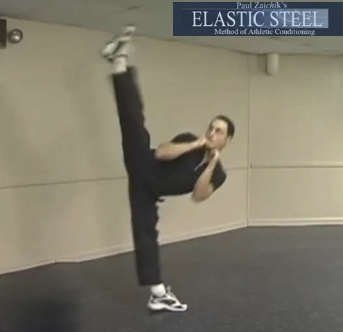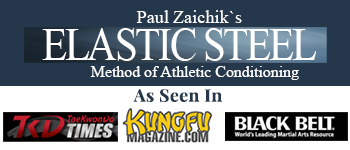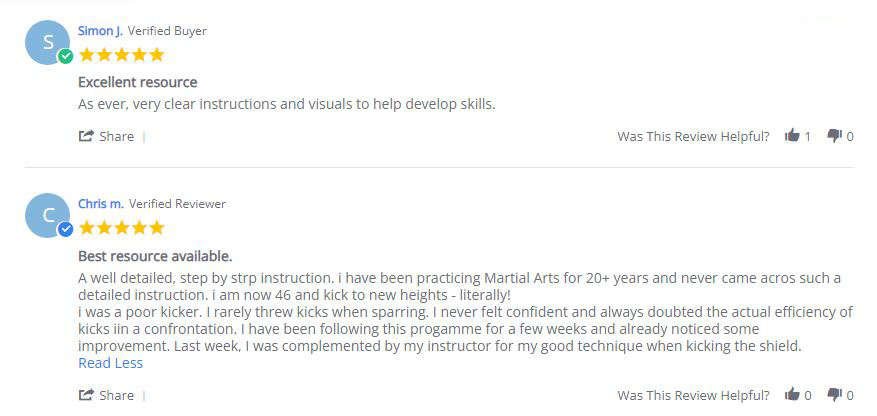What Is A Roundhouse Kick And How To Do A Roundhouse Kick

So What Is A Roundhouse Kick?
It’s one of the 3 major side line kicks. Which are Roundhouse Kick, Side Kick and Hook Kick.
Side line kick, meaning it’s on the side of the body. The foot is usually horizontal. This is opposed to front line kicks. Where the foot is vertical and the kick is in front. Ex. Front Kick Variations, Crescent Kick Variations and Axe Kick Variations. Note, in some styles the front line kicks are on the side or partially in front, not directly in front. The foot is vertical however.
Points of Impact of the Roundhouse Kick
Ball of the foot, instep, shin. In some styles practitioners train their big toes to be the point of impact for the roundhouse kick, but it’s not common. Also while wearing shoes or boots, some kickers will use the toes of their footwear as the point of impact. Finally the “foot fist” has been also experimented with. This is when the toes are curled, and required a lot of toe flexibility and training. In modern times, I don’t know of anyone using this roundhouse kick point of impact successfully.
Stances Used To Initiate or Recover from Throwing a Roundhouse Kick
This kick has been thrown from many stances. Front Stance, Horse Stance, fighting stance, kicking stance, etc. The roundhouse kick is also easy to connect in between punches, this making it a favorite foot technique of many fighters.
Debate about the Most Effective Point of Impact
Leaving “foot fist” aside, the ball of the foot, instep and shin each has their advantage and dis-advantages.
The instep is most often used by karate/TKD, Kungfu styles. (not all, but many)
The instep is most often used by karate/TKD, Kungfu styles. (not all, but many)
Advantage of the Instep Point of Impact When Throwing a Roundhouse Kick
Distance… In fighting half an inch can make a difference, and so longer kick has an advantage.
No training needed. Unlike the ball of the foot, which requires toe flexibility or shin, which requires conditioning, the instep is simple. Just pull the toes back and point the foot (plantar flex) the ankle.
Disadvantages of the Instep Point of Impact When Throwing a Roundhouse Kick
In some people the ankle is easily injured, and this max force can’t be produced. In the matter of fact I know cases, where a martial artist can throw full power roundhouse kick with one leg, but will hurt his ankle the kick is thrown with the other leg…
On the street, unless special shoes are worn, the ankle mobility is limited. So the instep can’t be completely exposed to the target.
One argument I often hear is that the bones of the foot break easily. MMA and MT guys like to make the argument in favor of the shin.
I personally think the ankle will break faster than the bones of the foot will.
Of course like any other joint, the shorter the lever the less chances of injury. In other words the closer to the ankle you make an impact, less chance of injury to the ankle. Closer to the foot you make contact, more chance the ankle can be injured.
If you have tight ankle. There goes your instep kicking. You might be forced to kick with the distant part of the foot. Unless you have very tough ankle, that may no workout too great.
Additionally while distance is important means of control, sometimes a shorter kick is needed. Ball of the foot or shin are better suiter for that.
Roundhouse Kick Combo
Over 30 years of Martial Arts experience and in-depth knowledge of the human body, now offered to YOU in 4 chapters.
So, when you get this Roundhouse Kicks combo, you will get Very Short and to the point and very easy to understand and follow routines for Roundhouse kicks.
This Roundhouse Kick Combo contains the following programs:
- Roundhouse Kick Kicking Leg Technical Development program
- Roundhouse Kick Speed Development program
- Roundhouse Kick Power Development program
Plus:
- Hook Kick Power Development program
Now Let’s Talk About the Ball of the Foot as the Point Of Impact
Advantages of the ball of the foot as the point of impact
It produces more power than the instep.
It also has smaller contact point. Why does this matter? Well smaller surface area of contact, the deeper penetration. If this kick is aimed at the torso, the organs will feel it more, since it can get deeper in.
More distance control. Ball of the foot kick can be adjusted of distance better than the instep kick. If the target is moving, it makes a difference. It’s not a large adjustment, but still.
Element of surprise. Most people don’t expect it.
Can be thrown from different angle at different distance, and can get around the block or guard. I used it and I can tell you, my sparring partners had in interesting look on the faces. “What just happened?”
Padding… The ball of the foot is padded, while the instep and shin are not. The ball of the foot is designed to take pressure, as we step on it every day. The bones of the foot and tibia need conditioning.
Alignment… The foot and ankle are protected, because the foot is perpendicular to the target. Instep roundhouse kick can spell danger if the distant part of the foot makes contact, once again due to long lever. Shin can break, and they do break sometimes when thekick is checked.
Disadvantages of the ball of the foot as the point of impact
Flexible toes… Few people can pull up their toes enough to expose the ball of the foot properly. It’s not the same as the front kick. You can adjust the trajectory in the front kick, to compensate for lack of toe flexibility. You can’t do this with a ball of the foot roundhouse kick. However, our ball of the foot program can help you
there.
there.
Ok And Now The Roundhouse Kick With The Shin. Muay Thai, Round Kick, If You Will.
Advantages of the Roundhouse kick with the shin:
Power. The kick relies more on the hip than the knee joint. More body weight is placed into the kick. At the knee joint the lever is shorter. (point of impact is closer to the knee) thus quadriceps hold the pressure better.
The shin bone can be conditioned into a baseball bat state. (There is a debate on the health ramification of this, but I doubt any committed fighter cares about that…)
Granted instep and ball of the foot can be conditioned also, but they are placed next to mobile parts. (toes, foot, ankle). One can walk around with a bruised shin, but not so much with injured ankle or busted foot.
In terms of the target, there is an advantage if the thigh is the target. This is not to say that roundhouse kick with the instep or ball of the foot can’t strike the thigh. However tibia just makes a better point of impact there.
It’s a shorter kick. This can be both good and bad. The good is that, it can fit in with the punches well, since the hands are shorter than feet. It can be an easy lead up to the knees, elbows, headbutts, throws and takedowns.
Less knee action. From the point of quadriceps flexibility that is. A person with not so flexible quad or not very mobile knee, can still throw a powerful shin roundhouse kick. On the other hand if the point of impact is the instep or ball of the foot, more knee action is needed. People with no so mobile knees will be at a dis-advantage.
Recovery/Deceleration Advantage of the Roundhouse kick with the shin
A karate/Taekwondo roundhouse kick needs very strong knee flexors to pull back the kick. This is for both speed and power. But a shin roundhouse goes all the way through, so no pull back needed.
Disadvantages of the Roundhouse kick with the shin:
Back to that distance. If I got a 8 foot spear and you got a 6 foot spear, you can still win. But I have a chance to touch you first.
Penetration- this depends on the target. If compared to ball of the foot kick, what is gained in power for the shin kick is taken away by the large surface area. If the kick is to the abdomen for example. Shin has a larger surface area than ball of the foot, so less ability to penetrate.
Flexibility requirement. If you are going to kick to the head, you need more flexibility to connect with the shin, than with a ball of the foot or the instep. The larger the height difference between you and your opponent ( if he is taller) the more it matter.
Those things break… It does not happen often, but it does happen. Of course you can hurt your instep or ball of the foot as well, but that would most likely be a different type of injury.
Roundhouse Kick Combo
Over 30 years of Martial Arts experience and in-depth knowledge of the human body, now offered to YOU in 4 chapters.
So, when you get this Roundhouse Kicks combo, you will get Very Short and to the point and very easy to understand and follow routines for Roundhouse kicks.
This Roundhouse Kick Combo contains the following programs:
- Roundhouse Kick Kicking Leg Technical Development program
- Roundhouse Kick Speed Development program
- Roundhouse Kick Power Development program
Plus:
- Hook Kick Power Development program

About the Author:
Paul Zaichik is an Exercise Science Expert, author of multitude of books, and the creator of Zaichik Stretching Technique (formely known as Kinesiological Stretching Technique). His speciality is flexibility training as well as body weight conditioning. His innovative method is designed to have maximum carry over into specific athletic techniques. Paul is the author of books and DVD’s on the topic of flexibility, martial arts and bodyweight training. Over the years, Paul Zaichik has worked with a variety of individuals including athletes, entertainers, and military personnel. His ElasticSteel Method of Athletic Conditioning programs, EasyFlexibility Programs and Zaichik Stretching Techniques are used world wide by both professional and amateurs with great success.
© ElasticSteel Corp., EasyFlexibility, Paul Zaichik, et. El., 2022. No part of the materials available through ElasticSteel.com, EasyFlexiiblity.com, site may be copied, photocopied, reproduced, translated or reduced to any electronic medium or machine-readable form, in whole or in part, without prior written consent of Paul Zaichik EasyFlexibility.com, Elasticsteel.com.. Any other reproduction in any form without the permission of Paul Zaichik EasyFlexibility.com, Elasticsteel.com is prohibited. All materials contained on this site are protected by United States copyright law and may not be reproduced, distributed, transmitted, displayed, published or broadcast without the prior written permission of Paul Zaichik, EasyFlexibility.com, Elasticsteel.com.



Leave a comment